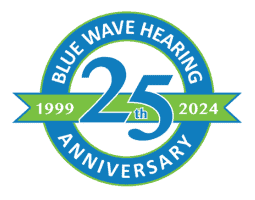- Alcohol and Hearing Health - April 9, 2025
- How Smoking Can Harm Your Ears - March 11, 2025
- Succeeding in the Workplace with Hearing Aids - February 10, 2025
Single-sided hearing loss, also known as unilateral hearing loss, occurs when a person experiences hearing impairment in only one ear while the other ear retains normal hearing abilities. Despite affecting only one ear, single-sided hearing loss can have significant impacts on daily life and communication.
Single-sided hearing loss can stem from various factors, including congenital conditions, acquired conditions, and idiopathic causes. Congenital conditions may result from genetic factors or developmental abnormalities, leading to hearing loss in one ear from birth. Acquired conditions, such as traumatic injuries, infections, tumors, or exposure to loud noise, can also cause unilateral hearing loss later in life. Additionally, in some cases, the exact cause of single-sided hearing loss may remain unknown, referred to as idiopathic hearing loss.
Symptoms of Single-Sided Hearing Loss
The symptoms of single-sided hearing loss may vary depending on the severity and underlying cause but can include difficulty understanding speech in noisy environments, challenges localizing sounds or determining their direction, reduced ability to hear sounds on the affected side, increased sensitivity to loud noises in the unaffected ear, and feelings of imbalance or vertigo, particularly if associated with inner ear disorders.
Single-sided hearing loss can pose several challenges in various aspects of daily life, including communication difficulties, safety concerns, social interactions, and emotional well-being. Understanding conversations in group settings or noisy environments can be particularly challenging for individuals with single-sided hearing loss. Difficulty localizing sounds, such as approaching vehicles or alarms, may pose safety risks. Moreover, coping with hearing loss can lead to increased stress, anxiety, or depression if left unaddressed, affecting overall emotional well-being.
Treatment Options
While single-sided hearing loss cannot always be cured, several treatment options can help manage symptoms and improve quality of life. Hearing aids, such as Contralateral routing of signals (CROS) or bone-anchored hearing aids (BAHA), can transmit sounds from the impaired ear to the healthy ear, enhancing overall auditory perception. Additionally, assistive devices like FM systems or smartphone apps equipped with directional microphones can improve speech understanding in challenging listening environments. Engaging in auditory rehabilitation programs can also help individuals adapt to unilateral hearing loss and improve communication skills.
If you suspect you have single-sided hearing loss, it’s essential to undergo a comprehensive hearing health exam with a hearing health professional. Your provider can conduct diagnostic tests to assess your hearing abilities, determine the extent of hearing loss, and recommend appropriate treatment options tailored to your needs. Early detection and intervention are crucial for effectively managing single-sided hearing loss and improving overall quality of life.
Single-sided hearing loss can present unique challenges in communication, safety, and social interactions. However, with early detection, appropriate treatment, and professional guidance from a provider, individuals can effectively manage symptoms and navigate their hearing journey with confidence!


